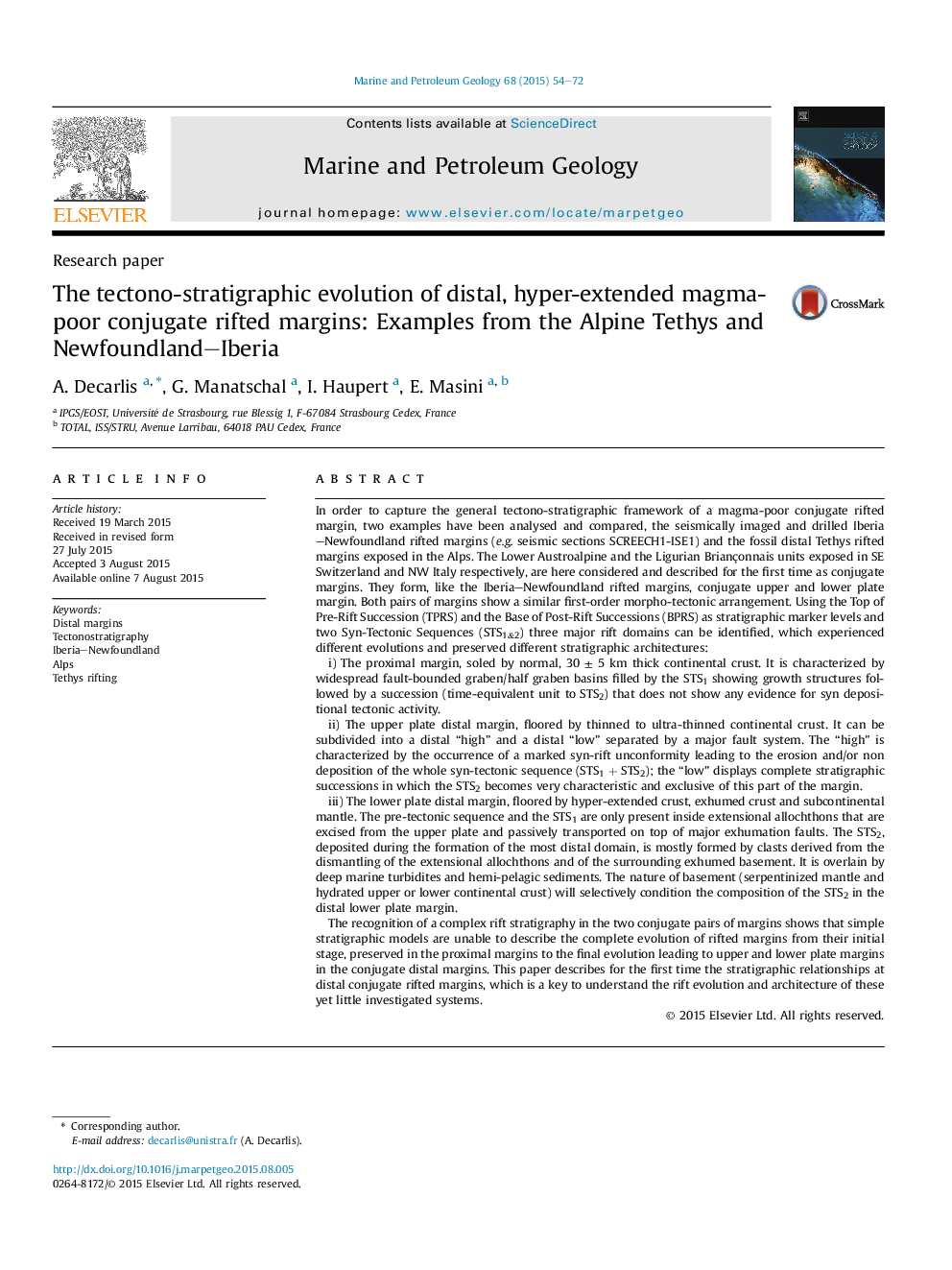| کد مقاله | کد نشریه | سال انتشار | مقاله انگلیسی | نسخه تمام متن |
|---|---|---|---|---|
| 6435075 | 1351611 | 2015 | 19 صفحه PDF | دانلود رایگان |

- We studied the tectono-stratigraphy of two cases of non volcanic rifted margins.
- The stratigraphy of their distal domains has been studied.
- We evidenced a similar first-order morpho-tectonic arrangement of the margins.
In order to capture the general tectono-stratigraphic framework of a magma-poor conjugate rifted margin, two examples have been analysed and compared, the seismically imaged and drilled Iberia-Newfoundland rifted margins (e.g. seismic sections SCREECH1-ISE1) and the fossil distal Tethys rifted margins exposed in the Alps. The Lower Austroalpine and the Ligurian Briançonnais units exposed in SE Switzerland and NW Italy respectively, are here considered and described for the first time as conjugate margins. They form, like the Iberia-Newfoundland rifted margins, conjugate upper and lower plate margin. Both pairs of margins show a similar first-order morpho-tectonic arrangement. Using the Top of Pre-Rift Succession (TPRS) and the Base of Post-Rift Successions (BPRS) as stratigraphic marker levels and two Syn-Tectonic Sequences (STS1&2) three major rift domains can be identified, which experienced different evolutions and preserved different stratigraphic architectures:i) The proximal margin, soled by normal, 30 ± 5 km thick continental crust. It is characterized by widespread fault-bounded graben/half graben basins filled by the STS1 showing growth structures followed by a succession (time-equivalent unit to STS2) that does not show any evidence for syn depositional tectonic activity.ii) The upper plate distal margin, floored by thinned to ultra-thinned continental crust. It can be subdivided into a distal “high” and a distal “low” separated by a major fault system. The “high” is characterized by the occurrence of a marked syn-rift unconformity leading to the erosion and/or non deposition of the whole syn-tectonic sequence (STS1 + STS2); the “low” displays complete stratigraphic successions in which the STS2 becomes very characteristic and exclusive of this part of the margin.iii) The lower plate distal margin, floored by hyper-extended crust, exhumed crust and subcontinental mantle. The pre-tectonic sequence and the STS1 are only present inside extensional allochthons that are excised from the upper plate and passively transported on top of major exhumation faults. The STS2, deposited during the formation of the most distal domain, is mostly formed by clasts derived from the dismantling of the extensional allochthons and of the surrounding exhumed basement. It is overlain by deep marine turbidites and hemi-pelagic sediments. The nature of basement (serpentinized mantle and hydrated upper or lower continental crust) will selectively condition the composition of the STS2 in the distal lower plate margin.The recognition of a complex rift stratigraphy in the two conjugate pairs of margins shows that simple stratigraphic models are unable to describe the complete evolution of rifted margins from their initial stage, preserved in the proximal margins to the final evolution leading to upper and lower plate margins in the conjugate distal margins. This paper describes for the first time the stratigraphic relationships at distal conjugate rifted margins, which is a key to understand the rift evolution and architecture of these yet little investigated systems.
Journal: Marine and Petroleum Geology - Volume 68, Part A, December 2015, Pages 54-72